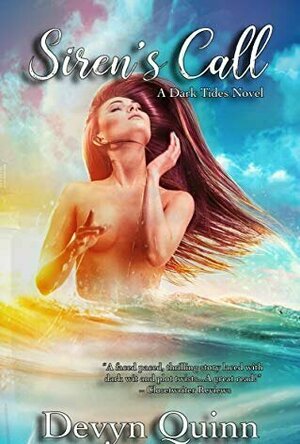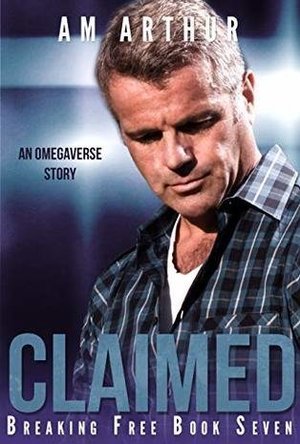
Your Colour App
Shopping and Lifestyle
App
Do you have clothes in your wardrobe that you never wear? Do you waste money on clothes that...
Kirk Bage (1775 KP) rated Borat: Subsequent Moviefilm (2020) in Movies
Feb 25, 2021
The point of difference and main gimmick here is introducing his daughter, played with wonderful awareness by Maria Bakalova, using her as a tentative hook for a story and also a sneaky way to fool those who would recognise Borat himself, but not his offspring. Just witness the most excruciating set piece of the film where ex mayor of New York and avid Trump supporting buffoon Rudy Giuliani all but incriminates himself as a rapist. A scene that matches anything the first film offered for maximum can’t-believe-what-I’m-seeing cringe value.
There are those that say they don’t like Borat or find him funny. I have never been sure that is the point, because everytime we do laugh, we immediately have to ask ourselves what we just laughed at and why we did? It is our own prejudices and preconceptions that are been highlighted – this is the “joke”, and it doesn’t require you to like the character or laugh at the more puerile moments – it is asking you to assess the judgements we all make on the values we live with in the world we have created. Liking it or finding it amusing is only necessary when looking at it as an entertainment, but its best aspects are so much more than that.
Myself, I agree, it often isn’t funny, and relies too often on crass elements such as bodily functions and teenage sexual innuendo. In many ways it is awful, but I also see that all of this is part of the cleverness. As a movie it has no peer to compare it to. Nothing else tries to do what these films attempt, so it is difficult to assess it as a work of entertainment or of… art (is it art?). Did I “enjoy” it? I mean, no not really, did I think it had artistic elements worthy of comment? I mean, no. But is it one of the most intelligent and genius commentaries on life in 2020? God damn right it is! There is so much relevance to worthy topics of social and political conversation here that you could spent 3 times the running time of the film talking about it. And more than being funny, that is the point of satire.
Both Baron Cohen and Bakalova are already doing well into award season with it, and good luck to them! They certainly deserve the triple nods they got from the Golden Globes, which is the biggest awards event to recognise comedy as a separate entity. I agree with some critics I have read that speculate this film is so of now that it won’t age well, and in fact come to make less and less sense as we move on and forget what the Trump era was like to live through. Longevity is something I know I look for when awarding high praise, so for that alone I have to knock it down a few points. In conclusion, I admire this acheivement more than I liked or enjoyed it. But I do recommend you see it as soon as possible if you haven’t already, because it is going to get wrinkly very quickly – just like Rudy G.
Kirk Bage (1775 KP) rated The Midnight Sky (2020) in Movies
Jan 22, 2021
The Netflix original movie The Midnight Sky was never going to be met with very high expectations, therefore. Although, it is testament to gorgeous George’s allure that we are still curious to at least see for ourselves what all the poor reviews are about. It seemed to be unanimous around the big voices that the main issue is that “nothing happens”. This does not worry me normally, as it quite often demonstrates how a 2020s audience, especially a Netflix one, has the attention span of a hungry vole in search of a fast worm followed by a quick nap! Patient story building and minimalism are not well regarded any more in the main. And that is a big problem for this film in finding an appreciative audience.
Clooney himself pitched it as Gravity meets The Revenant. Now, what you have done there, George, is set yourself up to be compared to two works of relative genius, both with far bigger budgets and the actual big screen in mind, not the “yes, it’s still a movie, but it is made for TV and phones” phenomenon. So it is bound to suffer in any critique. It didn’t stand a chance.
OK, it is ponderously slow. Fact. And there are moments when staring at Clooney’s extremely compelling beard is the most interesting thing to do with your brain or eyes in that moment. But to say nothing happens is erroneously unfair – Augustine is dying, and alone, in a world that has destroyed itself in an unspecified way. As he navigates a nightmare landscape of ice and his own diminishing sanity his subconscious creates an ethereal presence to guide him to his “essential” purpose: getting a message to a distant space station not to return to Earth under any circumstances.
Whilst not remotely original, and borrowing from the previously specified references in big, obvious ways (as well as Solaris, which GC didn’t mention, but its influence is apparent, both the Soderburgh and Tarkovsky versions), the heart of the idea isn’t anywhere near as weak as the naysayers would have you believe. If, in fact, you tune in to Clooney’s fine, sensitive performance, whilst reading between the lines of emotion and meaning, it is quite a satisfying tale. Yes, with a lot of problems, not least of all in momentum and the excitement you might expect from a sci-fi. But it isn’t “bad”, per se. Merely ponderous.
As for those up in space, including the always watchable and wonderful Felicity Jones, David Oyelowo, and Kyle Chandler, their lot is much more difficult than the Earthbound sequences. Caught between budget CGI and sets, and trapped in recreations of better space films, they simply don’t have the script to create any atmosphere or chemistry between themselves. Including an excruciating sing-along sequence that serves no purpose other than to make you cringe! The shame then is that we never feel like they are worth saving, which makes Augustine’s efforts feel futile and hollow – maybe something Clooney as director wanted to convey… but he shouldn’t have done it by making us care absolutely zero about those being saved.
Ultimately, it is an admirable failure in many ways, and not worth an earnest recommendation. It is another flop for Clooney as director. But there is just enough beauty and fragility in what Clooney is doing as an actor to make it far from a complete waste of time. Yes, it is a further example of Netflix producing something that feels churned out and corner cutting, rather than a fully rounded work that has all the framework a big cinema release would receive. It just isn’t quite as bad as the reviews suggest.
Super Self-Confidence Hypnosis Subliminal Affirmation HD Video App by Glenn Harrold
Lifestyle and Health & Fitness
App
This superb high quality subliminal hypnosis video by best selling hypnotherapist Glenn Harrold,...

Tracks4Africa Overland Navigator
Navigation and Travel
App
Tracks4Africa Overland Navigator is the iOS version of the Tracks4Africa GPS maps which has been...

Siren's Call (Dark Tides #1)
Book
Between desire and love there are some things that can’t stay buried, even in the deep of the...

Bound for Justice Box Set
Book
Bound for Justice: A Box Set Against the Rules Targeted by a drug cartel, Teague is out for...
ANTHOLOGIES AND COLLECTIONS BONDAGE AND BDSM CONTEMPORARY EROTIC ROMANCE
Debbiereadsbook (1608 KP) rated Claimed (Breaking Free #7) in Books
Mar 19, 2019
This is book 7 in the Breaking Free series, although there are 8 books, with a short that spans across 3 and 4. I would STRONGLY, HIGHLY, ABSO-FREAKING-LUTELY recommend that you read the other books before this one. BUT while I do say that, this one is far more a stand alone than the others. Things are recapped and caught up, but it takes a different path, as well as winding with the on-going story arc that continues through the other books.
We met Brandt, an Alpha, along the way: he is boos to the other police officers in the series, boos to ALL of them. He lost his pregnant mate, Ollie, ten years ago without a trace and has finally decided he should (mostly) move on. Going to an anonymous sex party seems the best way to get some sexual relief, without the commitment he cannot make. Meeting Little Blue, however, makes him change his mind. We met Demir, a beta, in book four, Found. He is Isa Higgs youngest son and was 15 at the time. Now an adult and betrayed by the person he thought he loved, Demir also attends said party. Big Red is just the person who pushes all of Demir's buttons and then some. There is a true connection between these two, but when they discover who Brandt is to Demir's father, they keep their relationship a secret, for now. Oliver is in the province to speak at a conference about omega trafficking. He cannot remember a time before ten years ago, when he was found in a van wreck. Meeting Brandt makes him feel . . . .something . . . .he's not sure what though. when Brandt explains who he is to Oliver, things begin to drop into place. But when Brandt tells Oliver about Demir, and that he simply cannot choose, Oliver presents a solution that will at least give them all a chance. Can they make it work?
This one, I found, was like a watching a train wreck coming at ya,it really was. You KNOW there is going to be fall out when Demir and Brandt find out who they are to each other. You KNOW there is going to be a big ole mess when Brandt and Ollie come face to face again. You KNOW that Ollie is going to fight this with every fibre of his being. You bloody well KNOW the Oliver's brother in law is not as . .pure . . in his intentions to Oliver after the death of his husband. An you KNOW, that when Isa finds out about the three of them, he is gonna go nuts. And there ain't a damn thing you can do to stop it! You just watch, and read, and wait and see how it all turns out! Amazing reading, I have to say.
I loved that it was OLLIE who came up with the solution to their predicament. That HE suggested they at least try to be a poly-family, since in his home of the last ten years it really is quite common. Loved that Ollie took Demir into his heart very quickly, the younger man making him feel as safe as Brandt did.
But Isa?? I wanted to punch Isa bloody Higgs so bad! After everything he has told his sons about being betas, that they can do anything, be anything they want to, as much as the alphas can, and he goes and says THAT to Demir! Not saying what, but if you've read these books, you can probably guess. He does redeem himself, but still, a punch was heading his way!
All the other guys pop up in this books, at some point or other, and it's great watching the babies grow up together. Seeing them already forming bonds: alpha, beta and omega all together is great. It would be amazing to catch up with these babies, as they grow and have babies of their own!
So, now, I'm sad! I only started this series because books one and two were shared with me, and I needed something to clear my head after a particularly heavy book. I thought this might be a good hangover cure! And BOY was I wrong, in the best way! Not a hangover cure, not in the least, but another deep dark book that pulled my into an eight book series, that did NOT let me go!
Thank you, Ms Arthur, for pulling into your worlds. I have some other books to read next!
5 amazing, but sad to see it end, stars
**same worded review ill appear elsewhere**
Heather Cranmer (2721 KP) rated Getting A Life, Even If You're Dead (No Going Back, #1) in Books
Jun 7, 2018
I've been wanting to read this book for awhile. I love books with ghosts in them. I had high hopes for this book, but it just turned out to be an mediocre read.
Right away, the title of this book suggests that it's not going to be a scary book or one that takes itself too seriously. I do like the title, and I found it very interesting.
I like the cover. I think it suits a young adult book, and the cover fits with the setting of the book.
The world building was alright. I just felt that the ghosts were able to do too many things such as they were able to manipulate objects in the living world. They could move things, open doors, log on to Facebook, etc. It was the logging on to Facebook that really got to me. The ghosts even had their own Facebook pages! They could even write on others' Facebook profiles. I just think that because the ghosts were able to do too much, they would've been discovered in a real world setting.
The pacing was just alright. It wasn't too fast, and it wasn't too slow. It was just kind of there. I found myself not really in a rush to find out what would happen next.
I did enjoy the idea of the plot. I like how Kendra is able to see her dead best friend and then realizes she can actually see ghosts. I like how there was a mystery incorporated in the book. There was also romance going on with all the characters. However, I just felt as if there was too much going on with the plot. Perhaps this book would've been better without the romance especially the romance between Loic and Amber. I also felt as if the mystery about how Loic died wasn't that big of a mystery at all. I had correctly predicted the mystery surrounding Loic's death from the very beginning. There is a small plot twist towards the end, but it's not a major one. The author does leave the ending of this book open for the next book in the series, but I think this book could work well as a stand alone.
I didn't really connect with any of the characters, but I did enjoy them. My favorite character was Amber. To me, she felt the most realistic. It was good to see the wide range of emotions she was feeling throughout the book. I enjoyed her zest for life (even if she was dead). I also liked Pierrot. He seemed like a sweet boy, and it was clear how much he loved his brother. As for Kendra, I didn't like the way she treated her mother. I found her to be a bit disrespectful and a bit spoiled. I also didn't really care for Loic. To me, he came across as very whiny and a little bit selfish. I get that he just died and wanted answers, but it's like he just wanted everything to happen all at once. He was a very impatient boy.
I felt that the dialogue fit in more with a middle grade book rather then a young adult book. The way the characters thought and spoke made them seem like they were around thirteen or fourteen as opposed to being around seventeen years old. I also felt the dialogue didn't fit in with a modern day story. I can understand Amber using words that people don't really say anymore being as she died in the 1980s (although she's been a ghost, so surely she would've picked up the modern day lingo), but even Kendra used odd words such as the word "crimmers" (or something to that effect) when she was shocked about something. There's not really any violence, but there is some swearing. There's also no sexual references besides kissing.
Overall, Getting a Life, Even If You're Dead by Beth Watson is just an alright read. It's not great, but it's definitely not a bad read by any means. I believe that if the ghosts were a bit more believable and the book was written in more of a young adult tone, it could've been much better. I probably will read the next book in the series simply because it will focus on Amber.
I'd recommend this book to those aged 13+ who are like the mystery genre but also like their books with a little bit of romance.
(I received a free paperback of this book from the author in exchange for a fair and honest review).
KalJ95 (25 KP) rated Star Wars: Episode IX - The Rise of Skywalker (2019) in Movies
May 5, 2020
What a disaster.
The Rise of Skywalker is an incoherent, messy and boring experience to chug through. Time and time again throughout the two and a half hours, I face palmed in absolute cringe and embarrassment at what Disney have done to this once celebrated franchise. The film feels rushed, on edge to get to the next destination for the newest plot point, without explaining or finishing the previous one, pointing even more towards those rewritten scripts. The film feels like multiple entries, crammed into one sprawling narrative that can't be resolved in the time given, this is especially the case with characters like Poe and Finn, who's arcs have been destroyed to make way for Rey, and that is the biggest issue. Rey has been written as the central moving force of this trilogy, but she never undergoes any development. Sure, she learns a few things about herself in this film, and challenges the idea of who she is for a brief moment, but she’s been made the perfect Jedi without trying. Its poor and lazy writing, and fans have began to feel an agenda is presenting itself. Whilst the women feel strong, wise, intelligent, the men are all morons, blundering their way through the story and often bickering with each other. Its an observation as a critic and fan, and its made me loath almost every character introduced since The Force Awakens. It became clear how little I cared about anything that was happening when a moment of embrace for the three main heroes once the final act ended. It should feel emotional, impactful, but it feels hollow, even forced. Much like most of the decision making of the film itself.
This brings me neatly onto the content of the film, if you can make any sense of it. If this is supposed to end the Skywalker saga once and for all, why add ridiculous plot threads and more pointless characters,that add no weight or purpose to the narrative? The ending is cut so quickly after the anti-climatic ending, that we don’t even have an idea of any characters finishing point. This is just one example of how badly things have spiralled into a mish mash of ideas from different writers and directors. If The Last Jedi was the franchise jumping into a well, this film is trying it's best to climb out. The two previous entries at least connected, but this feels a stand alone chapter, with no context or reason for what happens, and what does happen makes you scratch your head all the more.
I feel sorry for the hardcore fanbase, it genuinely feels like a slap in the face to history George Lucas has created. Once you lose the interest of your core audience, I feel its time to cut your losses. And yet again, another franchise has seen its demise. It feels like a symptomatic failure that the entertainment industry still don’t understand. You can buy any brand you want, but you can’t buy the fans love. Whatever direction Star Wars goes into next, I will not be tuning in.




